Motorcycle Investor mag
Subscribe to our free email news
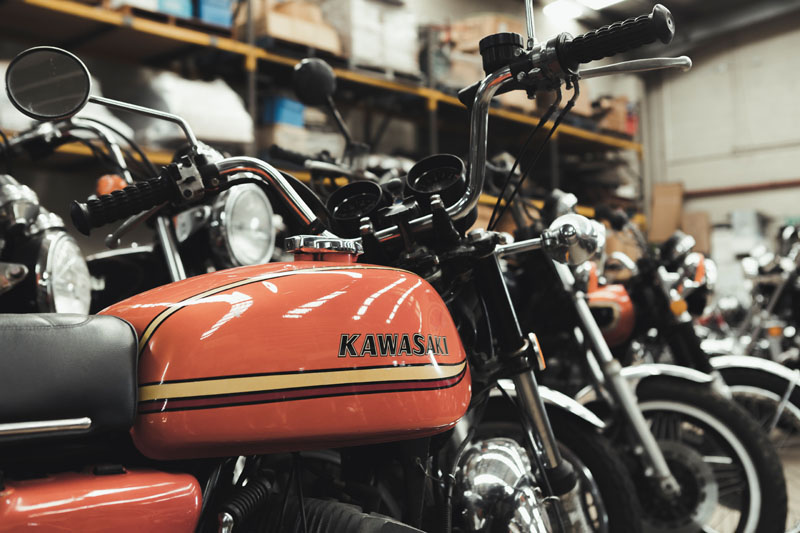
Classic bike buys – as good as money in the bank?
(MT#349, Jan 2019, updated July 2020)
by Guy 'Guido' Allen; pics by Ben Galli Photography
The terms “financially responsible” and “motorcycle purchase” are rarely seen in the same place. Maybe they should be
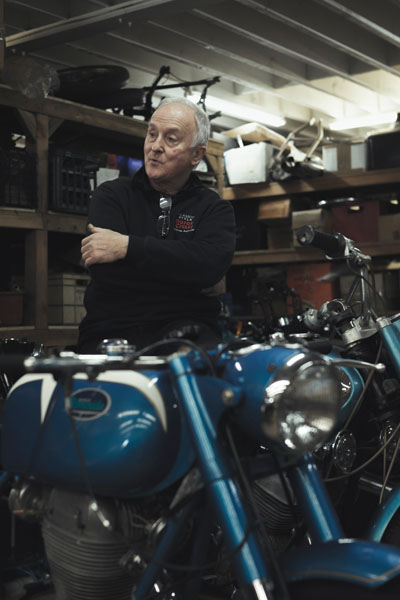
Is there such a thing as a ‘safe’ motorcycle purchase and, if so, what should we be buying? If you’ve watched prices on older bikes over the last decade or so, you will have noticed that the long-term trend is inexorable and up. Of course ‘knowing’ something and being able to prove it can be two very different things, so it seemed wise to turn to someone who lives with the consequences every working day.
Anyone having trouble getting a chrome era (shorthand for sixties and seventies) motorcycle purchase past the Treasurer at home probably needs to introduce them to Jon Munn (above), of Classic Style in Victoria. His is a peculiar view of the world, through a prism where he imports and sells nothing past the current government December 1988 cut-off, and where in reality his motorcycle universe stops somewhere around 1980.
Day in and day out, he deals with these machines and their buyers, with the wonderfully optimistic belief that “there is a bum out there for every seat – you just have to wait for it to wander in!”
Optimism aside, he also gets to observe market trends in a way few of us can. And so it was to him we turned for the answers to our question.
The first part was easy to answer. “With anything that’s getting to be ‘classic’ now, in a worst-case scenario your money is safe,” he says.
“If you buy something new out of the showroom, you’ve probably lost 20 per cent the minute you get on it. A classic has done all its depreciation. You can do it up a bit and make it a little bit better, and it will be worth a bit more.”
He’s on pretty firm ground with that, with the proviso that you pay a reasonable price to start with. The experience of the last couple of decades is that, while the motorcycle market overall has had its ups and downs, prices for classics have generally climbed over the long term.
Now that’s not to say it’s a path to riches – high growth is the exception rather than the rule. But there is a good case for saying there are much worse places to stash a bit of spare cash, so long as you look after it.

MODEST BUDGET
Now here’s the thing that put us off-balance when we wandered in to see Jon: We went in with a theoretical budget of $15,000. That’s not an absolute fortune and is enough to get you any number of mid-range classics out there.
While Jon will cheerfully sell you something in that range, he gets far more excited about what you could do for far less money – we’re talking well under $10k. It follows on from his earlier “you can do it up and make it better” comment.
Somehow it’s easy to get so caught up in the whole auction block fever that you forget even legendary models such as a Honda CB750-Four or Kawasaki Z900 can be had for relatively little money.
The Kawasaki is one of Mr M’s favourite examples. He points to a slightly odd-ball looking unit, painted with gold panels and fitted with a king/queen seat – no prizes for guessing where this one came from. America.
“Z900s are good news,” he reckons. “They were expensive for a long time (and still are when in pristine condition – GA). But we’re selling an awful lot in this sort of condition.”
This was originally a green bike that someone painted over and the stock exhausts have gone. However the engine is fine and, when you look past the gold paint, you start to see a lot of original bits are still in place.
“If you got it repainted and fitted an original exhaust – which you can get in the States for around $1400 – you’ve instantly got a bike that’s worth $14,000 or more.” And you can be sure there will always be an audience for a good Zed Nine.
Okay, I’ll bite – how much? “You can pick up something like that for around seven grand, as a running bike.” By the time you go through everything, it may well owe you close to what it’s worth, but your money is safe and you’ve probably had a fair bit of fun hunting down the bits and screwing it all together.
Plus, it’s something that you can build up over time, rather than have to stump up the whole value in one hit. You can see the appeal.
The Zed is far from being a lonely example of what you can do without the aid of a lottery win. Right next to it is a 1975 Honda Goldwing. Now this is the very first model of the motorcycle that redefined touring bikes. It’s of world-wide significance in the bike market, and should be revered in the USA, given its long-term popularity there. It’s not – yet.
Again we’re talking a cosmetic tidy-up, with aftermarket seat, pipes and paint in play. It’s fine mechanically – these things are near unkillable so long as the cam belts get done once every blue moon – and we’re talking about a $7k starting price.
A good one would be a classic that’s very capable of big miles and there’s every reason to expect the market for them will hot up in the not-too-distant future.
Are we still talking a price that’s a bit too rich? Here’s another – one of the late air-cooled single cam Honda CB750-Fours, a CB750K7, aka KZ, circa 1977. This was sold in parallel with the F1, which went to great lengths (such as a four-into-one exhaust) to modernise the looks of the near decade-old single cam series. However Honda hedged its bets and put the K7 in the market at the same time, complete with more traditional four-muffler exhaust set and a remodelled fuel tank. It’s actually a bit of a rarity.
Jon proved its mechanical health by firing it up without fuss, and then announced it was on the market for $3950. Seriously.
With some fresh pipes and a cosmetic make-over, you’d have something that looks very much the part, probably for less than a restored K2 or similar would cost.
Swinging the other way, looking for maximum bang for your buck, it’s hard to go past the circa 1980 Suzuki GSX1100E. This one is a small-tank version (very desirable) with the American GS badges on its sidecovers, plus the apparently inevitable king/queen seat. (Someone must have made a fortune out of these things in the seventies and eighties!)
“We don’t get them very often,” says Jon. Which is a shame, as they are a quick and strong motorcycle. I’ve owned two over the years and would have another any day. How much? $6950.
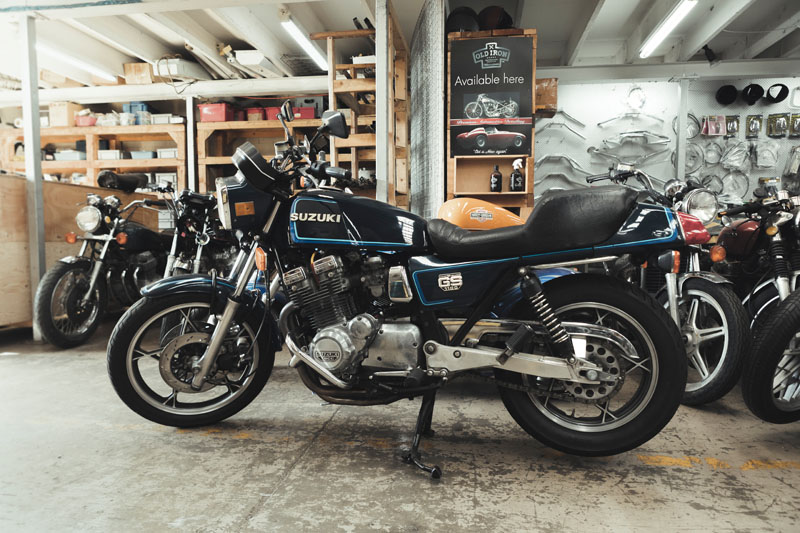
NOT SO FAST
If the medium to small-bore stuff has more appeal, there is no shortage of options. Jon says Kawasaki Z650s remain just as popular as when he was selling them new. Around $5k will get a very solid example.
As we wander around, I couldn’t help asking about a Honda CX650-based cruiser sitting on the end of a row. Jon had just had the seat recovered and was awaiting some original-pattern indicators (for VASS clearance – see sidebar) from Poland before he put it on the market.
Now you’d think there wouldn’t be a huge market for a CX650 Custom, and you might be right. However the powerplant is famous for its longevity and, at $3500, there’s a pretty good chance you’ll get your money back when you decide to move it on. It was a one-year-only model (1983) and consequently is a bit of a rarity.
More mainstream is a very presentable Suzuki Hustler, just a few metres away. This 1967 stroker boasted a six-speed transmission and was a hot performer for the day, capable of giving four-strokes twice its size a serious fright.
Right beside it is a very cute piece of kit, a Benelli 250 four-stroke single of the same vintage, badged as a Wards Riverside. No, we hadn’t heard of it either…
Apparently Wards was a department store in competition with Sears Roebuck and, like its more famous counterpart, sold just about anything including motorcycles. In this case they would have bulk-ordered them from Benelli and distributed them through its stores, probably in the same sporting goods department that sold guns and fishing gear.
Neither bike seemed to require work and both were priced around $7k.

EUROVISION
Okay, so what about more ‘traditional’ classics, from the UK Europe or USA? High end Harleys and Indians are tricky at the moment, because the market is buoyant, sellers are very much aware of what those machines are worth and the exchange rate currently works against buyers on this side of the Pacific.
There is one exception, which is iron Harley-Davidson Sportster 1000s. Jon reckons they’re decent value at around the $7k mark landed here.
British classics are becoming increasingly difficult unless you’re prepared to put in the work on improving one. Prices have soared in recent years, to the point where a really good restored 650 Bonneville can command serious money.
A recent top-end example was a concours-standard first-model 1959 Bonneville that sold at auction in Melbourne for $44,000. That same example changed hands eight years earlier for $25,000.
Mr M reckons that these days a properly restored 650 Bonneville is going to cost over $20k. However you can start off at a much lower price point – under $10k for a workable project – and parts availability is generally excellent.
If less workshop time and more riding has some appeal, that same $10k will buy a substantial Euro bike that’s ready to roll. Crammed into a line-up of dirt bikes is a BMW R90/6 with fresh paint. It was “horrible, faded and brown when we got it,” says Jon.
Airhead BeeEms have a smaller audience than their Japanese counterparts, but they’re a decent prospect for easily holding their value.
GLADDEN THE HEART
I’ll have to admit to being steered a long way off the original course when we started out on this story. The idea was to go in and see what we could do with a substantial but not crazy budget. In the end, we walked away with all sorts of ideas on spending a whole lot less and still end up with a great result.
Something that quickly came to light was we were not just talking about getting a decent return on the dollar, there was also the very real sense of satisfaction that could be gained at the same time. Call it therapy without the cost of a psychiatrist.
Jon mentioned an example that pretty well summed it up: “You’d be amazed at some of the bikes people come back with.
“I remember a Suzuki T500 that was sent to NSW. It was missing a sidecover, and it was faded, but it kicked over. The owner sent me photos and it’s now show quality – it really gladdens my heart. He invested in it and knows it will be snapped up when he goes to sell.”
***
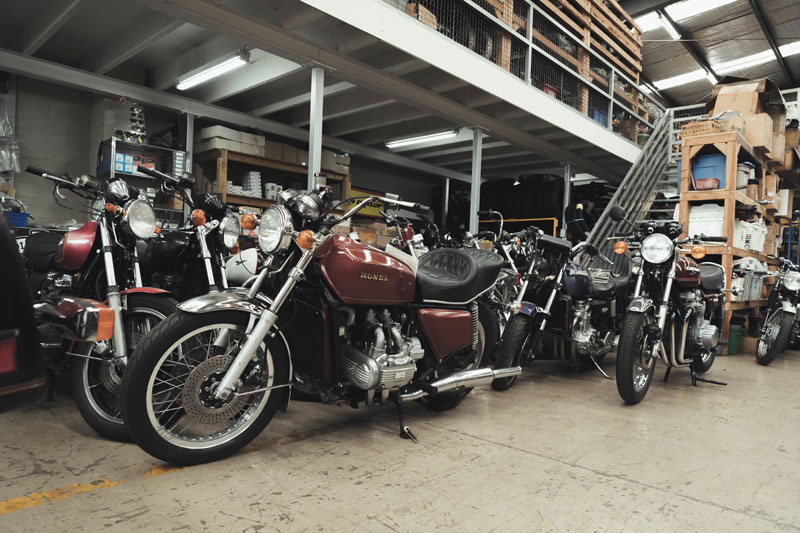
WHAT’S HOT
Jon believes the Japanese bike market is where it’s at for the moment, partly because of the age of the buyers, who lusted after these things when they were new. Here is his off-the-cuff hot property list.
Honda CB750-Four
Kawasaki two-stroke triples
Kawasaki Z900 & Z1000
Suzuki two-stroke triples
Suzuki Titan 500 twins
Suzuki TS400 Apache
Yamaha DT400
Yamaha XT/TT500s
GUIDO’S $15k TRIO
We started out with this budget for a few reasons. Among them, it’s equivalent to the cost of a middle-range new motorcycle, which throws up some interesting options.
Plus, it’s not enough to get into the truly legendary gold-plated investment classics. So it’s a little more speculative when it comes to the model’s long-term prospects.
Here goes…
Suzuki Katana 1100
Legendary styling and bulletproof mechanicals. Kat prices seem to have fluctuated over recent years, but they show a long-term trend of holding their own. In classic terms, it’s a lot of stylish bike for the money, though not a comfortable long distance ride.
Kawasaki Z1-R
Similar reasoning as for the Katana, but with a serious dose of the seventies. Not as quick or advanced as the Suzuki, this was done essentially as a way to breathe some market life into an ageing engine series. It’s one of those designs that has aged gracefully.
BMW R100RS
Hans Muth styling (same bloke who did the Katana) that changed the by then ageing boxer twin into something of a trend-setter. The slippery fairing works a treat, turning this into a true long-distance classic that shouldn’t be too difficult to keep going.
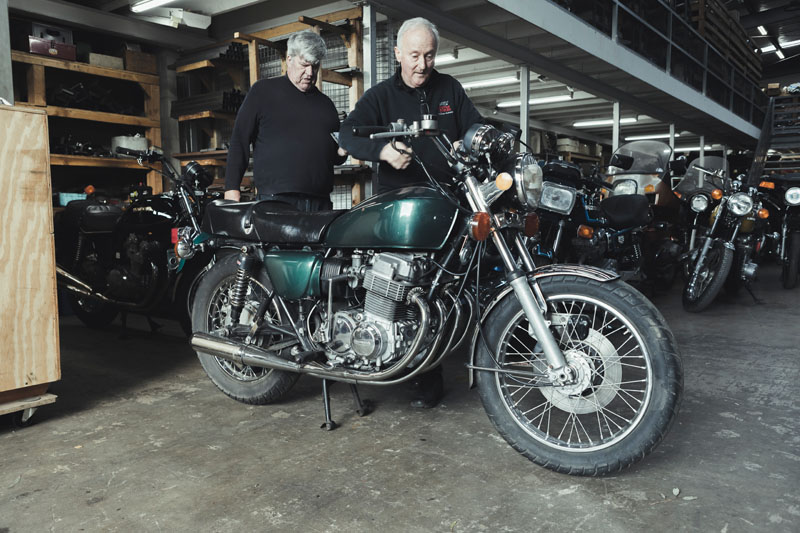
AUSSIE OR IMPORTED?
Jon Munn laughs when we pop this question, as he cops it every day: should I buy a bike originally sold in Australia, or is an import okay?
“American means lower mileage,” he says. “Anything sold new here has generally been through the mill. You find the odd gem – but it’s a big country and they got used.
“The Americans mostly buy bikes as toys. Most of the ones we get are from the mid-west and eastern side. They have shocking winters there and the bikes are kept in sheds for half the year.
“Typically the family buys the son or daughter a bike to go to college and it’s lovely. Then the snow comes along and they buy a car, so nine times out of 10 the bike goes in the shed and nine times out of 10 it stays there.”
Technically there’s no real difference. “They didn’t build anything special for Australia and we were a minority market.”
As for the UK, Jon says the combination of high prices and an unfriendly exchange rate means he’s not doing much business there at the moment.
Imported machines need to obtain a VASS (Vehicle Assessment Signatory Scheme) certificate as part of the local approval process. The tester is looking for correct spec components such as lights and brakes, which is why Jon was waiting for the Polish CX650C indicators mentioned in the main story.
The typical paper trail for an older import is: Import Approval, VASS certificate plus a roadworthy certificate. In addition to importing his own bikes, Jon offers a service for private purchases from the UK and USA.
-------------------------------------------------
Produced by AllMoto abn 61 400 694 722
Privacy: we do not collect cookies or any other data.

Archives
Contact



